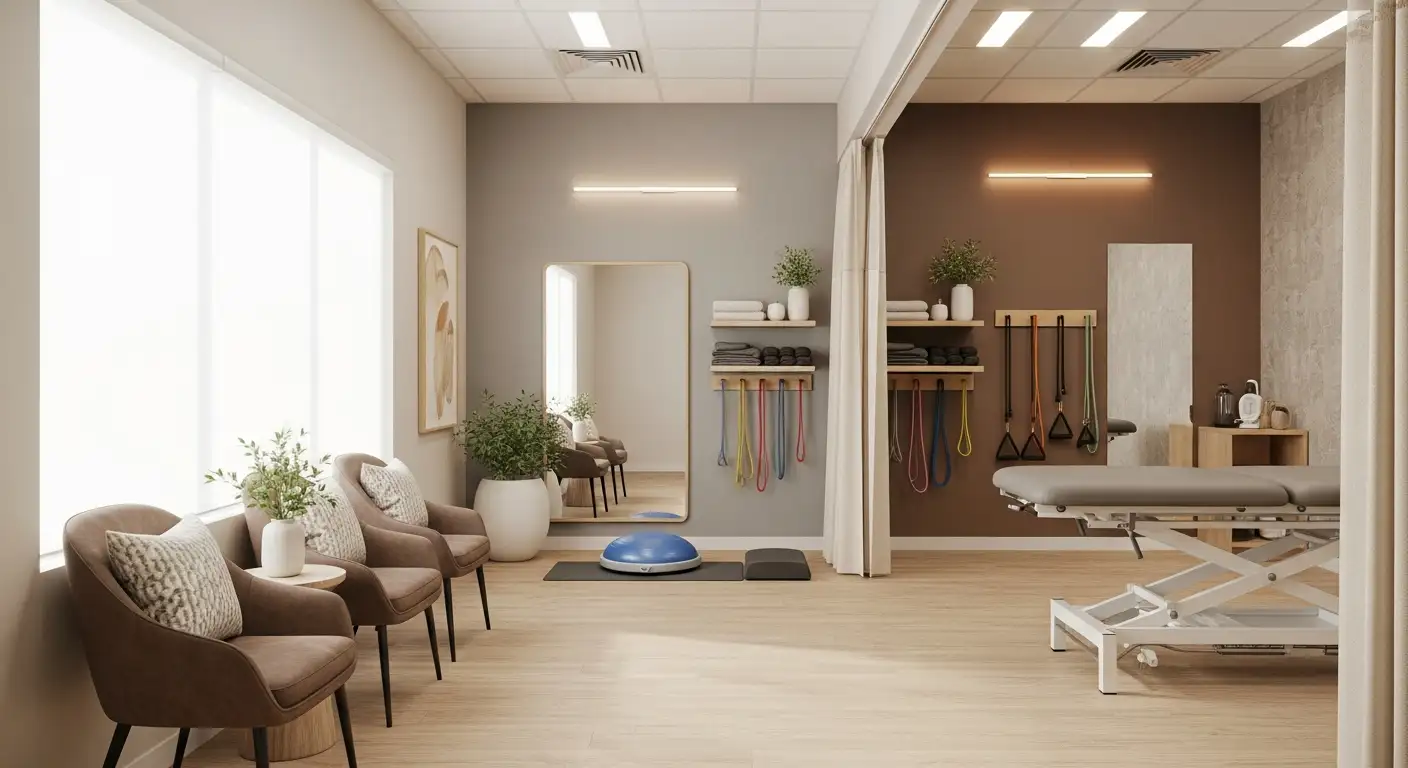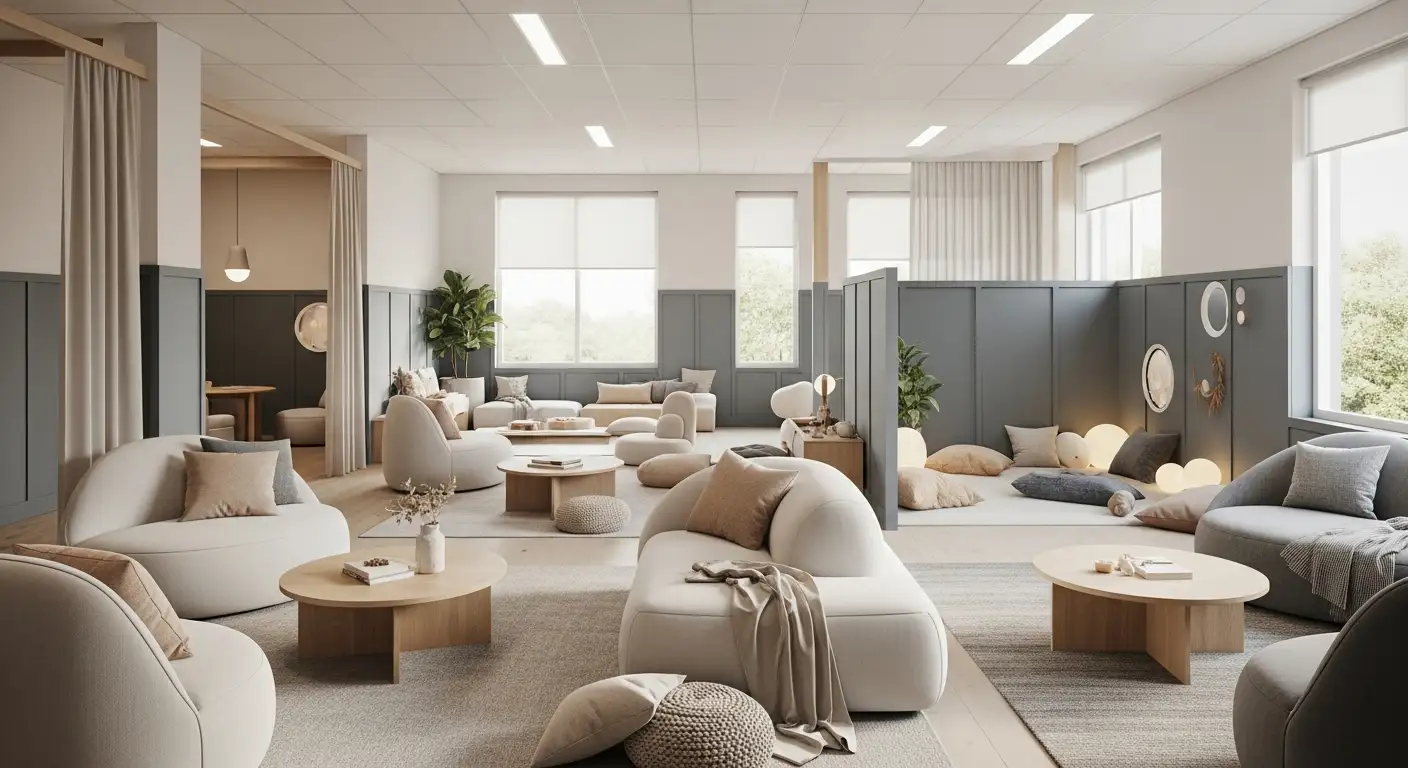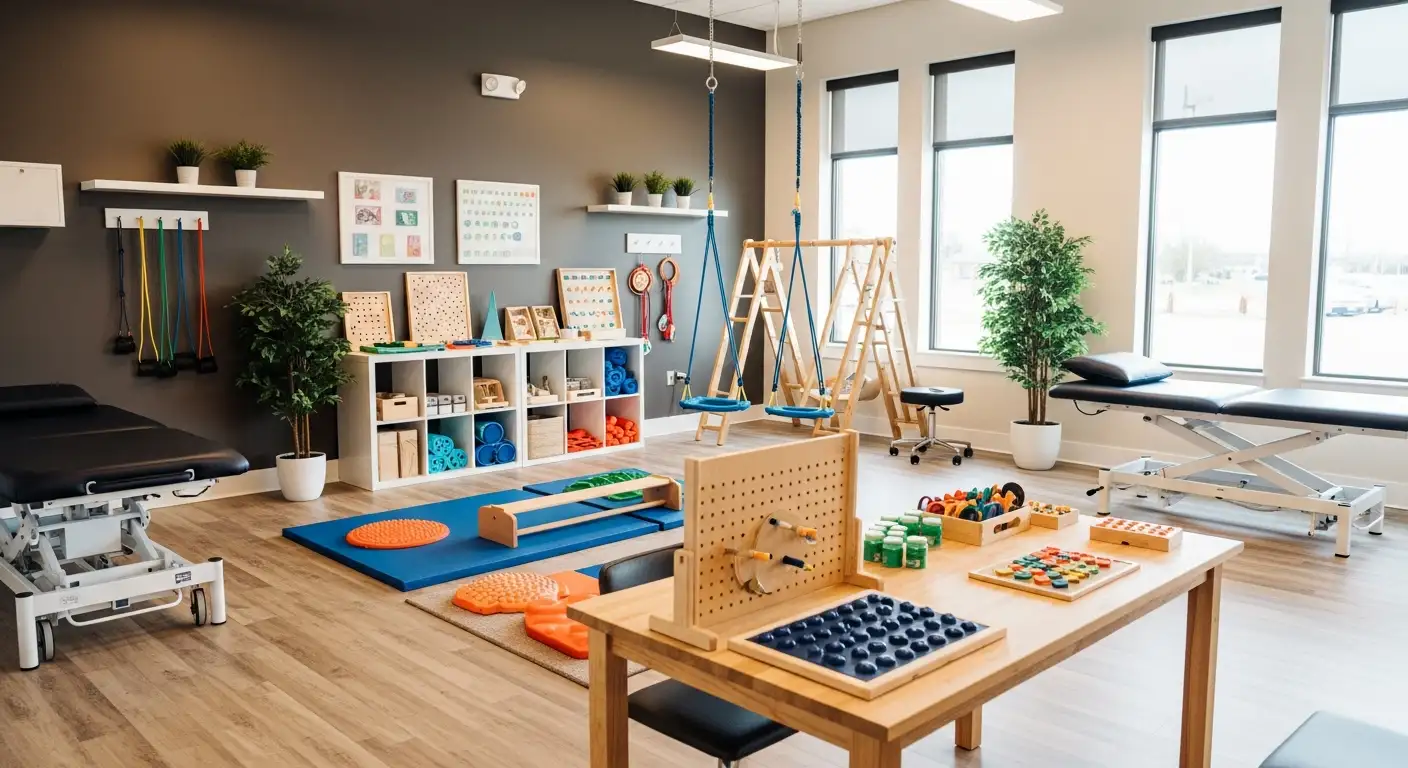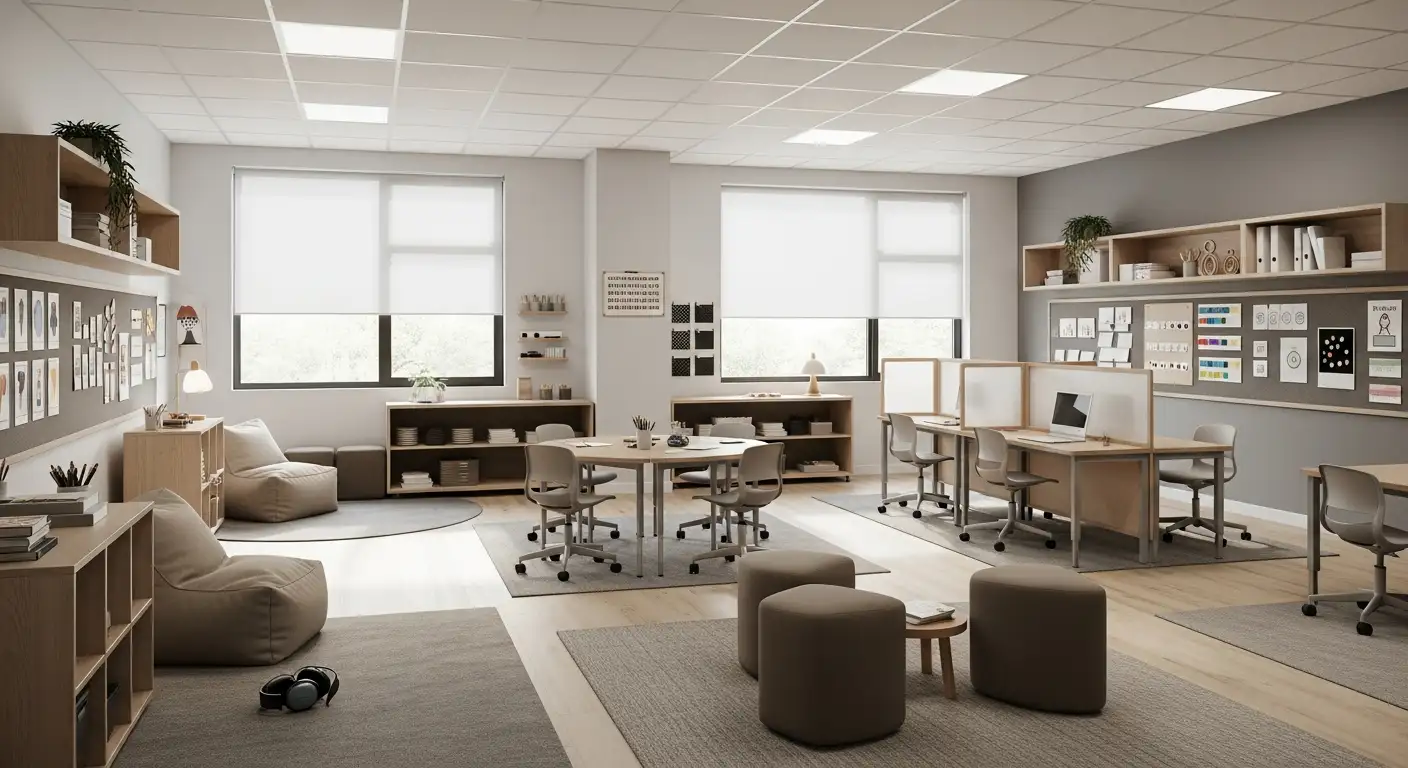Physical Therapy for Children: Building Strength and Mobility


Understanding the Foundations of Pediatric Physical Therapy
Pediatric physical therapy is a specialized discipline dedicated to supporting children’s physical development, enabling them to achieve motor milestones, and enhancing their overall quality of life. From infancy through adolescence, children face various challenges—whether due to developmental delays, medical conditions, or injuries—that can hinder movement and mobility. Early intervention, tailored treatment plans, and engaging therapies are crucial in helping children build strength, coordination, and independence, laying a foundation for lifelong health and well-being.
The Role and Benefits of Pediatric Physical Therapy in Building Strength and Mobility
What is the role and benefit of pediatric physical therapy in building a child's strength and mobility?
Pediatric physical therapy is essential in nurturing a child's physical development by focusing on strengthening muscles, improving coordination, enhancing balance, and increasing overall mobility. Therapists design personalized, age-appropriate exercises that promote motor skills through engaging activities, ensuring children are motivated and involved.
This specialized therapy is particularly crucial for children facing developmental delays, neurodevelopmental disorders, or medical conditions such as cerebral palsy, Down syndrome, spina bifida, muscular dystrophy, and other mobility-impairing conditions. With early intervention, physical therapy helps these children reach significant milestones like sitting, crawling, walking, and jumping, which build a foundation for independence and participation.
Children benefit from therapy in multiple ways. Improved muscle strength and joint flexibility facilitate easier performing of daily tasks like dressing, walking, and playing. Better balance and coordination help prevent falls and injuries, fostering confidence in movement.
Why is physical therapy important for children with delays or medical conditions?
Children with delays or health issues like head injuries, sensory processing problems, and neurological disorders often struggle with mobility and motor control. Physical therapy provides targeted interventions that address their specific needs, promoting neuroplasticity and motor learning.
Therapeutic techniques, such as neurodevelopmental therapy, handling strategies, and innovative technologies like aquatic therapy and motor learning interventions, support sensory integration and motor control. These methods help children develop strength and coordination while also reducing secondary complications like muscle tightness, joint contractures, and poor posture.
The collaborative nature of pediatric physical therapy involves working closely with families, medical professionals, occupational and speech therapists to ensure a comprehensive approach that promotes overall well-being.
How does pediatric physical therapy help children achieve motor milestones and independence?
The ultimate goal of pediatric physical therapy is to enable children to perform movement patterns necessary for daily activities and social participation. Therapists assess each child's developmental stage, identify delays or impairments, and create tailored plans to encourage progress.
Activities like balance exercises on beams, obstacle courses, and functional mobility training—such as stair climbing or outdoor play—are used to improve strength and coordination dynamically. These fun activities not only promote motor skills but also boost confidence and independence in everyday life.
Fostering independence through mobility support, such as gait training and use of assistive devices, empowers children to engage more fully in school, sports, and social activities.
How do multidisciplinary collaboration and personalized plans enhance therapy outcomes?
The best outcomes in pediatric physical therapy arise from a team effort involving physical therapists, families, doctors, occupational therapists, speech therapists, and educators. Collaboration allows for a holistic understanding of the child's needs and ensures therapies are aligned with their goals.
Personalized treatment plans are crafted based on thorough assessments, considering the child's unique condition, age, environment, and family preferences. Incorporating play-based, sensorimotor, and developmental activities keeps therapy engaging and effective.
As children grow and their needs change, therapy programs are adapted to match their evolving capabilities. This flexibility ensures continuous development, preventing secondary issues such as contractures or imbalance.
The impact of pediatric physical therapy on overall child development
Beyond physical gains, therapy significantly contributes to emotional, cognitive, and social growth. Success in movement skills enhances self-esteem and encourages participation in peer activities.
Engaging exercises, playful and motivating activities foster a positive attitude toward movement and health. Parents and caregivers are also educated on ways to support ongoing development at home.
In conclusion, pediatric physical therapy is a cornerstone of supporting children's physical growth, helping them achieve independence, and improving their overall quality of life. With a focus on individualized, multidisciplinary approaches, therapy empowers children to reach their full potential in movement and beyond.
Common Techniques and Exercises Supporting Motor Development

What techniques and exercises are commonly used in pediatric physical therapy to support motor development?
Pediatric physical therapy employs a variety of techniques and exercises tailored to the child's specific needs. One foundational approach includes neurodevelopmental strategies such as the Bobath, Rood, and Vojta methods. These approaches focus on handling techniques that promote motor control, neuroplasticity, and sensory integration. They help children learn muscle activation patterns and improve movement coordination, especially useful for conditions like cerebral palsy.
Therapists incorporate play-based activities and functional exercises that make therapy engaging. These activities include animal walks, obstacle courses, balloon volleyball, and sensory-play tasks like bubble blowing or sensory bins. Such play not only enhances motor skills but also boosts confidence and enjoyment during therapy sessions.
Strength and flexibility training are vital components. Exercises like bridging, crab walks, and resistance band routines target muscle strengthening. Flexibility exercises, including stretching routines, prevent muscle tightness, especially in spastic CP, and improve overall mobility.
Balance and coordination exercises support stability and motor planning. Activities include walking on a balance beam, line walking, and using balance boards or stability balls. These help children develop spatial awareness and prevent falls.
Sensory integration and multimodal stimulation are also crucial. Therapists use proprioceptive input, visual tracking, and tactile activities to improve sensory processing, which directly impacts motor learning and coordination.
Modern pediatric therapy often incorporates innovative assessments and technology. Tools like neurodevelopmental assessments, early diagnosis scales, and even virtual reality systems assist therapists in tracking progress and customizing interventions effectively.
Overall, the integration of these techniques creates a comprehensive, playful, and evidence-based framework that supports optimal motor development, enhances strength and balance, and promotes independence.
| Technique/Exercise Type | Description | Example Activities |
|---|---|---|
| Neurodevelopmental approaches | Focus on handling and sensory integration to promote motor skills | Bobath, Rood, Vojta methods |
| Play-based activities | Use engaging, fun tasks to develop motor skills | Animal walks, obstacle courses, balloon volleyball |
| Strength and flexibility exercises | Support muscle development and prevent tightness | Bridging, resistance band exercises |
| Balance and coordination exercises | Improve stability and spatial awareness | Walking on a line, balance beam |
| Sensory integration and multimodal | Enhance sensory processing impacting motor skills | Proprioceptive activities, visual tracking |
| Use of technology and assessments | Employ modern tools for precise evaluation and progress tracking | Early diagnosis scales, virtual reality applications |
This holistic approach ensures children receive personalized, effective therapy that fosters growth and developmental milestones through a blend of traditional techniques and innovative practices.
Conditions Requiring Pediatric Physical Therapy

What conditions or developmental issues might require a child to undergo physical therapy?
Children can have various health challenges that impact their ability to move, develop motor skills, or recover from injuries. Pediatric physical therapy is tailored to address many of these conditions, helping children improve their strength, mobility, and overall development.
One major group of conditions involves neurological disorders. For example, cerebral palsy (CP), spina bifida, and transverse myelitis are neurological issues that can impair coordination, muscle control, and movement patterns. Physical therapy aims to enhance motor skills, reduce muscle stiffness, and assist in achieving better independence.
Musculoskeletal problems are also common reasons for therapy. Conditions like torticollis (neck muscle tightness), scoliosis (spine curvature), hip dysplasia, and orthopedic injuries resulting from falls or sports are addressed through specialized exercises and interventions. These help correct posture, improve joint range of motion, and support proper growth.
Developmental delays and motor impairments are core focuses of pediatric physical therapy. Children demonstrating delays in sitting, crawling, walking, or other milestones—such as toe walking beyond the typical age—may require therapy to support their progression. These interventions promote muscle development, balance, and coordination.
Injury recovery, whether from sports accidents, surgeries, or trauma, is another critical reason for physical therapy. Post-injury or post-surgical programs help rebuild strength, restore movement, and prevent future complications. For example, children recovering from fractures, ligament injuries, or brain injuries benefit from tailored rehabilitation plans.
Finally, genetic and acquired disorders that impact mobility, such as muscular dystrophy, Down syndrome, or birth-related injuries, often require ongoing physical therapy. These therapies help manage symptoms, increase functional independence, and improve life quality.
In summary, pediatric physical therapy covers a broad spectrum of conditions, all centered around improving movement, preventing deformities, and supporting developmental progress. It is an essential component of comprehensive care for children with diverse health challenges affecting their mobility and growth.
| Condition Category | Specific Conditions | Purpose of Therapy | Additional Notes |
|---|---|---|---|
| Neurological Disorders | Cerebral palsy, spina bifida, transverse myelitis | Improve motor skills, reduce spasticity, promote independence | Involves neurodevelopmental techniques |
| Musculoskeletal Issues | Torticollis, scoliosis, hip dysplasia, orthopedic injuries | Correct posture, improve joint mobility, support growth | Includes stretching, strengthening, and bracing |
| Developmental Delays | Toe walking, delayed sitting/walking, hypotonia | Support developmental milestones, enhance coordination | Often play-based and fun for children |
| Post-Injury/Surgical Recovery | Fractures, ligament injuries, brain injuries | Rebuild strength, restore movement, prevent stiffness | Includes functional mobility training |
| Genetic/Acquired Disorders | Muscular dystrophy, Down syndrome, birth injuries | Manage symptoms, increase independence | Ongoing therapy may be needed |
Exploring these conditions illustrates the vital role pediatric physical therapy plays in helping children overcome challenges and reach their full potential. If a child displays signs such as difficulty walking, frequent falls, muscle stiffness, or delayed motor skills, consulting a healthcare provider for evaluation and potential therapy is recommended.
The Therapy Process: What Parents Should Expect
What is the typical process and what should parents expect during pediatric physical therapy?
When beginning pediatric physical therapy, parents can anticipate an initial comprehensive assessment of their child’s motor skills. This assessment often involves standardized tools like the Alberta Infant Motor Scale or General Movement Assessment to evaluate gross motor development, identify delays, or diagnose specific conditions such as cerebral palsy or developmental delays.
Following the assessment, the physical therapist collaborates with the family to set personalized goals tailored to the child's unique needs and developmental stage. These goals focus on improving mobility, strength, coordination, balance, and overall functional independence.
Once goals are established, a detailed treatment plan is crafted. This plan includes engaging, fun activities designed to motivate the child and promote physical development. Techniques such as neurodevelopmental therapy, sensory integration exercises, and play-based routines are common to aid motor learning and facilitate progress.
Designing individualized, fun treatment plans
Treatment activities are carefully selected to match the child’s interests and developmental level. Therapists often incorporate playful exercises like obstacle courses, animal walks, balloon games, and sensory activities to make sessions enjoyable.
These activities are not only effective in promoting motor skills but also foster social interaction and emotional well-being. The therapy plan is adaptable, evolving with the child's growth and progress.
Frequency and duration of sessions
Typically, children attend therapy sessions once or twice a week, with each session lasting about 45 to 60 minutes. The duration of therapy varies depending on the child's needs, which can range from a few months to several years.
Consistent attendance is important to maintain momentum and achieve meaningful results. Short-term intensive therapy options may also be considered for specific goals or urgent needs.
Parent and caregiver involvement
Parents and caregivers are integral to the therapy process. They often participate in sessions, learning exercises that they can practice at home to reinforce therapy gains. This support helps children better incorporate new skills into daily routines like dressing, playing, and school activities.
Therapists provide guidance on strategies to promote safety and proper technique, ensuring that movement activities are beneficial and enjoyable.
Progress monitoring and plan adjustments
Regular evaluations are scheduled to monitor the child's progress. These assessments measure improvements in strength, range of motion, balance, and motor milestones.
Based on these evaluations, therapists may modify activities, increase or decrease session frequency, or set new goals. This flexible approach helps maximize benefits and adapt to the child's evolving needs.
What to remember
Parents should anticipate a collaborative, engaging, and child-centered process. They play a vital role in reinforcing skills and maintaining motivation. With consistent participation and tailored therapy plans, children are well-positioned to improve their movement abilities, gain confidence, and achieve greater independence.
Importance of Early Intervention in Pediatric Physical Therapy

Why is early intervention important for children requiring physical therapy?
Early intervention plays a vital role in pediatric physical therapy because the first few years of life are critical for brain development. During this period, the brain exhibits a high degree of plasticity, meaning it is especially receptive to learning and adapting. This window of opportunity allows children to develop motor skills, coordination, and strength more effectively when therapy begins early.
Addressing developmental delays as soon as they are recognized helps children meet essential milestones such as sitting, crawling, walking, and jumping. When these delays are managed promptly, children can build a solid foundation for further physical development and functional independence.
Preventing secondary health issues is another major benefit of early intervention. Without proper support, children with movement problems may develop complications like joint contractures, muscle tightness, or balance issues. Initiating therapy early can protect joints and muscles from deformities and reduce the risk of future injuries.
Early physical therapy also enhances long-term results. It promotes neurodevelopmental processes by encouraging appropriate movement patterns and muscle strength. This early start increases the chances of achieving greater mobility, independence, and quality of life later in childhood and beyond.
Families are also empowered through early intervention. When caregivers learn to incorporate therapeutic activities into daily routines, children receive continuous support outside of clinical settings. This family involvement boosts confidence and ensures that therapy benefits extend into the child's natural environments.
In summary, early intervention maximizes a child's potential by leveraging brain plasticity, preventing complications, supporting long-term development, and involving families actively in the healing process. The earlier therapy begins, the better the prospects for a healthier, more independent future for children with movement challenges.
Outdoor Activities and Exercises for Strength and Mobility

How can outdoor activities and exercises contribute to a child's strength and mobility?
Engaging children in outdoor activities and exercises plays a crucial role in their physical development. These activities promote active movement and help in building muscle strength, improving balance, and enhancing overall coordination. Classic activities like climbing trees, jumping on trampolines, swinging on playgrounds, and riding bikes target large muscle groups and encourage motor planning.
Outdoor activities also foster the development of fine motor skills, such as hand-eye coordination, through activities like tossing balls, gardening, or playing with water toys. For children with specific needs, therapists often adapt outdoor routines to focus on achieving particular goals, such as improving core stability or sensory integration.
Beyond physical benefits, outdoor play supports mental health and emotional well-being. Nature exposure reduces stress, improves mood, and boosts cognitive development. Activities such as obstacle courses, animal walks, racing games, and recreational sports challenge children to practice dynamic movements, boosting their confidence and independence.
Safety and supervision remain vital to maximize benefits and prevent injuries. Using protective gear for bike riding, ensuring safe play areas, and supervising complex activities are essential practices. Professionally guided outdoor exercises can be especially beneficial for children with developmental delays, cerebral palsy, or other conditions, tailoring activities to meet their unique therapeutic objectives.
Activities like obstacle courses, animal walks, riding bikes
Outdoor exercises encompass a diverse range of engaging activities:
- Obstacle courses challenge coordination, balance, and agility.
- Animal walks (e.g., bear crawl, crab walk) promote muscle strength and motor control.
- Riding bikes enhances lower limb strength, balance, and endurance.
- Hopping, jumping, and skipping foster explosive power and coordination.
- Ball games and relay races enhance hand-eye coordination and speed.
- Climbing and swings develop grip strength and spatial awareness.
Fostering motor skills, balance, coordination
These activities are designed not only to boost physical abilities but also to develop essential motor skills. Improvements in balance and coordination enable children to perform daily activities more independently and confidently. Repeatedly engaging in these movements helps refine neuromuscular pathways, leading to better posture, gait, and overall functional mobility.
Adapting outdoor activities for special needs children
Children with special needs, including those with cerebral palsy, autism, or sensory processing disorders, benefit from adapted outdoor routines that match their capabilities. For example, using assistive devices during bike riding, providing a softer landing with mats during jumping activities, or incorporating sensory-rich elements like textured surfaces and visual cues.
Activities can be simplified or made more engaging through sensory integration techniques, making the experience enjoyable and therapeutic.
Safety and supervision considerations
Ensuring safety is paramount. Children should wear appropriate protective gear, such as helmets and pads during biking or climbing. Play areas should be inspected regularly for hazards like sharp objects or uneven surfaces. Supervision by trained therapists or adults knowledgeable in child development helps maintain a safe environment.
Maximizing engagement, safety, and therapeutic effectiveness of outdoor activities encourages children to enjoy movement while building strength and mobility.
| Activity Type | Benefit | Suitable For | Adaptations & Additional Info |
|---|---|---|---|
| Obstacle courses | Improves coordination, balance | All children, especially developmental delays | Use soft mats, visual guides |
| Animal walks | Strengthens muscles, enhances motor planning | Cerebral palsy, autism | Simplify or modify movements |
| Bike riding | Boosts endurance, leg strength | General development | Use training wheels, helmets |
| Jumping games | Explosive power, coordination | Motor delays | Soft surfaces, gradual progression |
| Climbing & swinging | Grip strength, spatial awareness | OT needs, sensory issues | Supportive equipment, supervised |
Outdoor exercises and activities are fundamental for nurturing children’s physical health, fostering independence, and supporting their overall growth. Tailoring these activities ensures that every child, regardless of ability level, can benefit and enjoy movement, setting solid foundations for lifelong health and well-being.
Recent Innovations and Future Directions in Pediatric Physical Therapy
Are there any recent advancements or new methods in pediatric physical therapy?
Recent progress in pediatric physical therapy has been driven by the adoption of cutting-edge technology and evidence-based techniques that tailor treatments to individual needs. This includes the use of virtual reality (VR), wearable devices, and robotics that create more engaging and functional therapy experiences for children. These tools help children practice movement patterns in immersive environments, which can improve motivation and outcomes.
In addition, the field now emphasizes early diagnosis and assessment using advanced tools like gait analysis systems, motor development scales, and standardized testing. These assessments allow therapists to identify movement concerns sooner and develop personalized interventions that support optimal growth.
Evidence-based methods such as neurodevelopmental therapy (Bobath), task-specific training, and Vojta approach are backed by research and are widely implemented, especially for children with cerebral palsy and other motor disorders. These treatments aim to improve strength, coordination, and independence, integrating motor learning principles to promote lasting improvements.
The importance of a holistic, multidisciplinary approach continues to grow, involving collaboration among physical therapists, occupational therapists, speech-language specialists, educators, and families. This teamwork ensures that all aspects of a child's development are addressed, leading to better long-term results.
Looking ahead, the adoption of innovative technologies like brain-computer interfaces (BCIs) and artificial intelligence (AI) platforms hold promising potential. BCIs could facilitate direct communication between the brain and external devices, assisting children with severe motor impairments. AI-powered platforms may further personalize therapy, analyze data for progress tracking, and suggest adjustments in real-time.
These advancements also increase the accessibility of pediatric therapy, making it possible for children in remote or underserved areas to receive high-quality care through tele-rehabilitation and virtual consultations. Overall, pediatric physical therapy continues to evolve towards more effective, engaging, and personalized interventions, promising a bright future for children's motor development and overall well-being.
Recognizing Signs for Pediatric Physical Therapy Needs

What should parents look for to recognize if their child may need physical therapy?
Parents play a vital role in monitoring their child's growth and development. Being attentive to certain signs can help determine if professional intervention is necessary.
One of the primary indicators is delayed motor milestones. If a child is not sitting independently by the age of 9 months, crawling by 12 months, or walking by 18 months, it could signal developmental concerns that benefit from early physical therapy.
In addition, challenges with balance, coordination, or posture are common reasons to seek further evaluation. Children who frequently stumble, fall, or exhibit poor posture—such as leaning forward or having asymmetrical head or body positions—may need assistance to improve movement quality.
Persistent issues like pain, stiffness, or gait abnormalities are also signs. If a child complains of discomfort during movement, exhibits joint stiffness, or walks with an unusual pattern such as toe walking or limping, these are important cues.
Children struggling with limited joint motion or slow recovery from injuries might have underlying muscular or joint issues. For example, difficulty straightening limbs or slow healing times post-injury should be assessed promptly.
Behavioral clues can reveal underlying problems too. Reduced motivation to participate in active play, withdrawal from physical activities, or signs of frustration when moving suggest further evaluation.
Additionally, observing gait patterns such as favoring one leg, dragging a foot, or using assistive devices longer than expected warrants professional input.
Parents should watch for specific behaviors like skipping crawling, arriving early at toe walking, or consistently favoring one side of the body. These signs often point to motor development concerns affecting overall mobility.
If any of these signs are present, consulting a healthcare professional or pediatric physical therapist is advised. They can perform assessments to identify underlying issues and develop personalized, engaging therapy plans aimed at optimizing their child's development and confidence.
Identifying when to seek help early can not only foster better motor skills but also prevent secondary complications like poor posture, joint contractures, or muscle weakness.
Overall, attentive observation combined with professional guidance ensures children receive the support needed to thrive physically, emotionally, and socially.
Supporting Every Step of Growth
Pediatric physical therapy is an essential component in nurturing children’s physical abilities, fostering independence, and promoting optimal motor development. Through early intervention, innovative techniques, and engaging activities—both indoors and outdoors—therapists empower children to overcome challenges and reach their full potential. Collaboration among healthcare providers, families, and educators ensures personalized, effective therapies that make a lasting impact on children’s health, confidence, and inclusion in all aspects of life. As advancements continue, pediatric physical therapy remains a vital tool for building stronger, more mobile, and confident future generations.
References
- Physical Therapy | Nemours KidsHealth
- Physical Therapy for Kids: Benefits, Goals & Our Approach | NAPA
- 5 Effective Physical Therapy Tips for Kids with CP
- Pediatric Physical Therapy: Helping Children Thrive
- 10+ Pediatric Physical Therapy Exercises & Activities
- How Can a Physical Therapist Help My Child? - Coral Care
- 10 Outdoor Exercises That Integrate Physical Therapy for Children
- Physical Therapy for Cerebral Palsy - Improving Mobility
Recent articles

How Physical Therapy Helps with Posture and Balance
Regaining Stability: The Comprehensive Role of Physical Therapy in Enhancing Posture and Balance

SPELL Autism Framework
Integrating Therapies for Effective Autism Support

Signs & Symptoms Of Autism In Adults
Navigating Autism in Adulthood: Recognizing Key Signs and Finding Support

How ABA Therapy Teaches Safe Social Boundaries
Building Safety and Social Confidence through ABA Therapy

The Role of Occupational Therapy in Improving Daily Living Skills
Enhancing Independence: How Occupational Therapy Transforms Daily Living Skills

How To Become an Autism Support Teacher
Pathways and Essentials for Aspiring Autism Support Teachers


